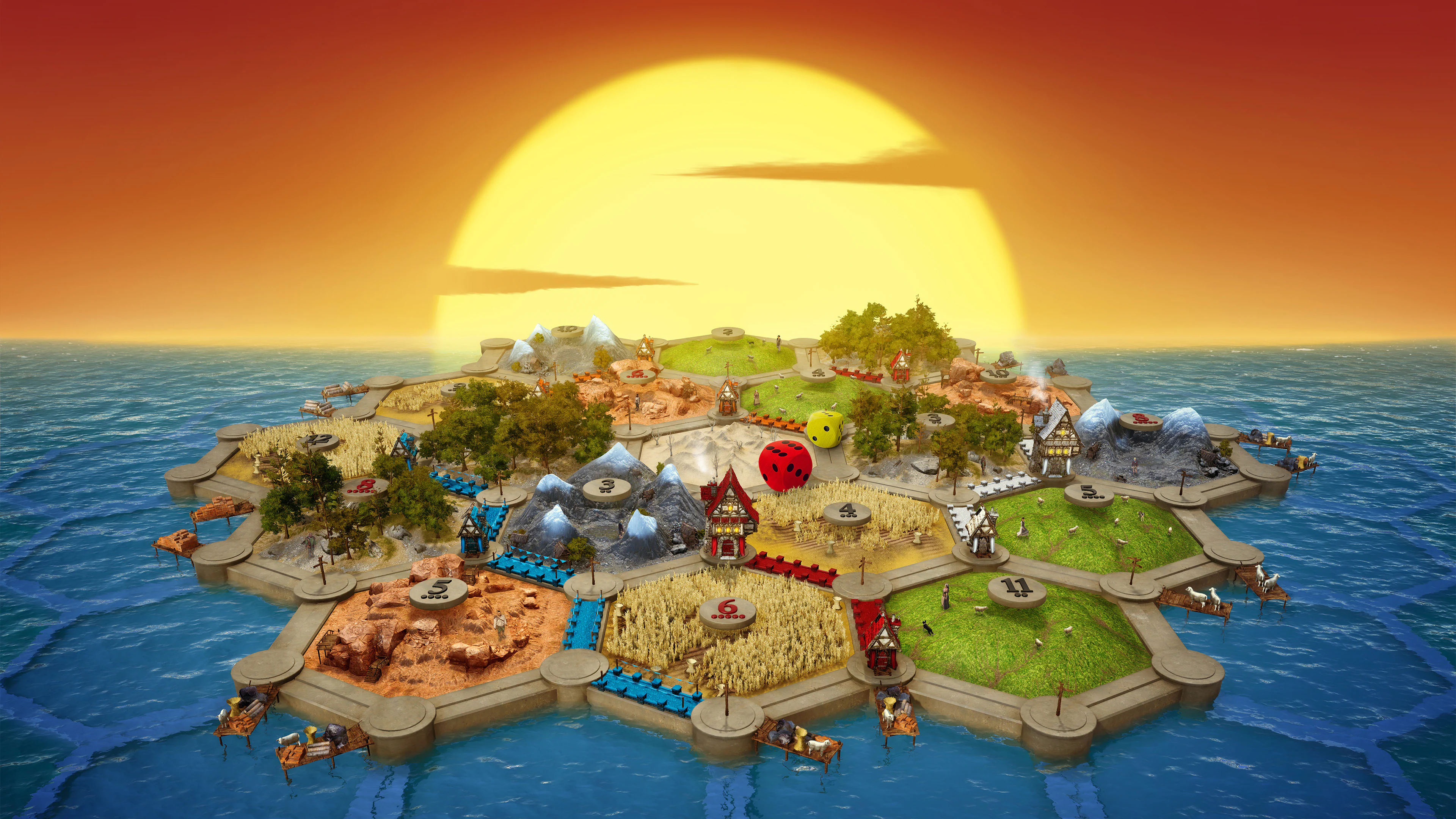Game Information:
Name: Catan
Creator: Klaus Teuber, Asmodee (publisher)
Platform: Board game, console (Xbox One, PS5), and PC/Mac
Target Audience: 3-4 players (5-6 with expansions) ages 10+
In Catan, also known as The Settlers of Catan, players compete against each other to establish settlements on the island of Catan. The game board is modular, consisting of tiles that represent different types of terrain that produce different resources (wood, brick, sheep, wheat and ore). The objective of the game is to be the first player to reach a certain number of victory points by establishing settlements/cities, winning development cards or achieving other scenario-based goals. Players begin with two settlements and two roads on the intersections and edges of tiles and collect resources from these corresponding tiles. In comparison, I Will Be President! (IWBP) is tentatively played on a modular board consisting of 20+ territories. Each territory is categorized by 4 colors and may be clumped together in different regions of the map. Each player, or president, has the objective to win the majority of votes by enacting policy cards and maneuvering around the board. Similarly to Catan, our game concept also starts the player with a home territory, but adds 3 required policy cards (specific to each player) that must be played to win and a player token.

Both games require that players make strategic decisions to advance their position in the game. In Catan, players need to decide where to build settlements and roads to expand their territories and gain more resources. Likewise, in IWBP we require players to strategize their movements (territories to campaign in), policies to enact (giving rewards based on territories or events), and in negotiation with other players. Negotiation plays a critical role in both Catan and IWBP. Players in Catan can negotiate trades of resources to expand their territories, while IWBP players can trade policies and votes to inch closer to the winning objective. In my playthrough of Catan, I could feel the tension between fellowship and plausible betrayal, and players could retaliate by monopolizing resources or blocking others’ expansion. I imagine that IWBP will further escalate this tension, making for exciting or devastating moments.
In terms of deceit, Catan and IWBP are also similar because of their negotiation mechanisms. Players in Catan should withhold information about their resources to avoid being monopolized on, build in unpredictable ways to not be blocked, and can deceit by lying. Similarly, IWBP possesses similar qualities as players want to maximize votes so they can monopolize special policy cards (that other players need to win), use a veto policy card to overturn other policies, and lie about policies in ways that create a competitive environment. In doing so, both games encourage social interactions, but at the possible cost of deceit which was a fun interplay to explore.
While the social interactions across these games are similar, the objectives largely differ as we touched upon above. In Catan, there is the clear goal of accumulating as many victory points as possible, but in IWBP a player needs the majority vote and to play their required policy cards (that other players may have). The decision making is similar, but the road to winning differs. More concretely, IWBP players need to track multiple resources such as votes, policies and position, so players must be aware of all these factors to win.
Moreover, IWBP introduces additional mechanics to add a sense of randomness to the game. There are random event cards that can impact the state of the game that are enacted once certain voting thresholds have been reached (50, 100, 200 votes tentatively). These random events add a sense of unpredictability to the overall gameplay across different stages of the game, which will force players to adapt their strategies under pressure. Contrastingly, Catan does not include elements of randomness like this and players are focused on developing their strategy and expanding territories, centering the game around player-player interactions. IWBP does as well, but has unique mechanics that differentiates itself from Catans gameplay. In the end, both games (will) offer a unique experience across playthroughs, challenging players to think strategically and react to game environment physically and socially to win.



